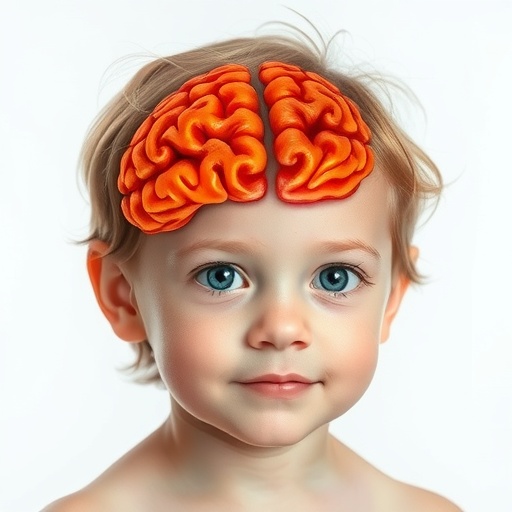Could CRISPR Offer Hope for a Devastating Childhood Brain Disorder?
A groundbreaking advancement in gene regulation technology has shown promise in alleviating debilitating neurological symptoms in a mouse model of a severe genetic brain disorder, raising hopes for future therapies targeting human patients. The disorder, known as SCN2A haploinsufficiency, arises when a child inherits only a single functioning copy of the SCN2A gene instead of the usual two. This leads to impaired synaptic maturation, developmental delays, nonverbal cognitive impairment, and a high incidence of refractory seizures. Traditional gene editing approaches aim to correct or replace faulty gene sequences, but new research from the University of California, San Francisco (UCSF) unveils a radically different strategy that leverages a refined form of CRISPR technology to activate the healthy SCN2A gene copy, effectively compensating for the deficient one without altering DNA sequences.
SCN2A encodes a critical neuronal protein responsible for fine-tuning electrical activity and signal transmission between neurons. Insufficient expression of this protein disrupts synaptic communication essential for learning, behavior, and seizure control. The novel therapeutic approach employs CRISPR activation (CRISPRa), a technique designed to upregulate gene expression by recruiting transcriptional activators to the gene’s promoter region. Unlike conventional CRISPR-Cas9, which introduces double-strand breaks to edit genomic DNA, CRISPRa modulates gene activity epigenetically, offering a subtler and potentially safer intervention. This method capitalizes on the presence of a healthy allele to boost protein production in instances where one gene copy is inactive or mutated.
Scientists involved in this study tested CRISPRa in a well-characterized mouse model engineered to carry the same SCN2A haploinsufficiency mutation observed in humans. These mice exhibit many symptoms analogous to the human condition, including cognitive impairment and spontaneous epileptic seizures. Interestingly, the researchers noted that although the physical synaptic connections in these mice appeared anatomically intact, their functional maturation was disrupted by the reduced SCN2A protein levels. This finding suggested that restoring SCN2A expression, even after early developmental windows, might revive synaptic function and alleviate neurological deficits.
The CRISPRa system was ingeniously engineered to specifically bind to and amplify expression from the single functional SCN2A gene copy throughout the brain. Delivery methods included both direct intracerebral injections and systemic administration via the bloodstream, demonstrating versatility for potential clinical translation. The upregulation strategy successfully increased SCN2A protein to near-normal levels, reinvigorating synaptic signaling pathways. Remarkably, mice treated after several weeks of life — an age roughly corresponding to pre-adolescent humans — showed restoration of typical brain electrical activity patterns and a striking reduction in seizure susceptibility.
These encouraging outcomes indicate that the mature brain retains a significant capacity for functional recovery through targeted gene activation. The intervention did not result in adverse effects in healthy mice with two functioning SCN2A alleles, suggesting a built-in regulatory threshold that prevents overexpression toxicity. However, the authors caution that thorough safety evaluations will be critical before progressing toward human clinical trials, particularly given the delicate balance required in ion channel protein levels for maintaining neural network stability.
The study builds on a decade-old innovation originating at UCSF, where researchers first demonstrated the CRISPRa platform’s ability to elevate gene expression without direct genome editing. This technology had previously shown promise in treating genetic obesity models by compensating for haploinsufficient gene defects. The current research extends CRISPRa’s therapeutic horizon into complex neurodevelopmental disorders, showcasing its adaptability across diverse biological systems.
Beyond seizure suppression, scientists hypothesize that sustained elevation of SCN2A may improve higher cognitive functions impaired by the disorder. Children affected by SCN2A haploinsufficiency often face profound challenges in communication and behavior. By restoring the brain’s neuronal signaling capacity, CRISPRa-based interventions could enhance speech development and independent living skills, fundamentally transforming quality of life for these patients and their families.
An intriguing aspect of the research was the identification of a novel biomarker related to eye movement abnormalities in the mouse model, mirroring findings in human patients. This discovery not only facilitates precise phenotyping for preclinical studies but also suggests a simple, noninvasive clinical test for early diagnosis in affected children. This synergy between animal modeling and human clinical insight strengthens the translational potential of CRISPRa therapies tailored for SCN2A disorders.
The data have already attracted commercial interest, with UCSF licensing the technology to Regel Therapeutics, a biotechnology company focused on developing CRISPR-based treatments for neurological diseases. This partnership aims to accelerate the path from animal models to human clinical trials, ensuring rigorous regulatory review and optimization of delivery methods suitable for pediatric patients.
Challenges remain, including ensuring durable gene activation, minimizing immune responses to viral vectors, and scaling production. Furthermore, the therapy’s long-term effects on neural circuit development and plasticity require comprehensive evaluation. Nonetheless, the conceptual leap from gene correction to gene modulation marks a paradigm shift in how inherited neurological conditions might be addressed in future medicine.
In conclusion, the UCSF study leverages an elegant, noninvasive technique to restore deficient gene function in a challenging neurodevelopmental disorder well beyond early developmental stages. By harnessing CRISPRa to activate the healthy gene copy, researchers have revitalized synaptic function and mitigated seizures in a mouse model closely mirroring the human condition. This work unveils a novel therapeutic avenue that may one day enable children affected by SCN2A haploinsufficiency to overcome cognitive and motor limitations imposed since birth. The promising preclinical results pave the way for clinical research that could revolutionize treatment options for this severe disorder, offering hope to countless families worldwide.
Subject of Research: SCN2A Haploinsufficiency and Gene Activation Therapy
Article Title: Could CRISPR Fix this Severe Childhood Brain Disorder?
News Publication Date: September 17, 2025
Web References: https://www.nature.com/articles/s41586-025-09522-w
Keywords: Neurological disorders, CRISPR, Brain, Cellular neuroscience, Synapse formation, Seizures, Brain development, Neuroscience, Genetics, Mutation, Proteins, Neurons, Medical treatments




